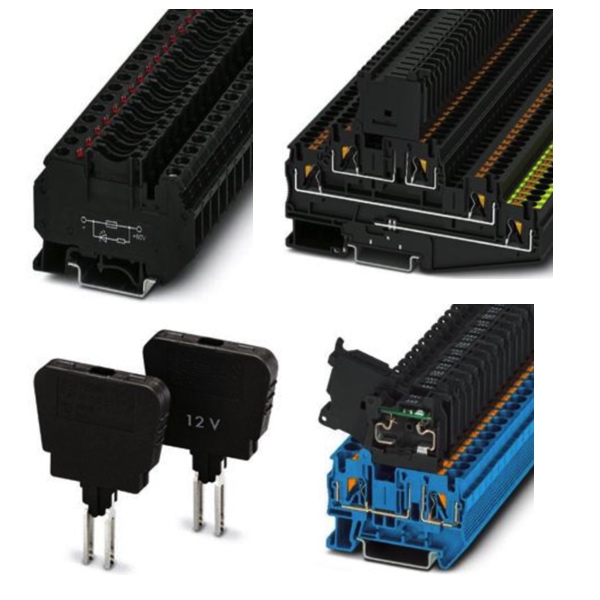Fuse Terminal Blocks

Terminal blocks with integrated fuse holders are electrical connectors that safely bring together wiring in electrical enclosures. The fuse terminal blocks offer several significant benefits. The compact design helps save mechanical space on the panel; not having to account for a long row of separate fuse holders and individual terminal blocks allows for much more flexibility in laying out the panel.
To cater to the diverse needs of different applications, there are numerous configurations of fuse terminal blocks. They accommodate a variety of fuse types—glass tube fuses, blade fuses, and ceramic fuses, to name a few. These blocks are found in various electrical systems and are compatible with various electrical requirements and standards. Among the many features fuse terminal blocks offer are indicator lights and compatibility with numerous amps.
The fuse terminal blocks are easy to install and maintain. Fuse terminal blocks have a variety of designs, but many have a push-in or spring clamp mechanism that ensures quick, secure wire connections. You don't even need any tools! Once the wires are connected, they're housed in unfused terminal blocks that are mounted back to back. The fuse is installed in a separate housing that is either mounted next to the assembly or on top of it.
FAQs
Does the fuse holder in a fuse terminal block have a blown fuse indication?
Yes, many fuse holders in fuse terminal blocks are equipped with blown fuse indicators, often in the form of LED lights, to provide a visual alert when a fuse has blown.
DCan wiring from multiple devices be thread through just one terminal block?
No, wiring from multiple devices should not be threaded through a single terminal block, as each terminal is designed for secure connection of one conductor per side to ensure safety and reliability.
What can cause a fuse blow out on a feed through fuse terminal block?
A fuse blowout on a feed-through fuse terminal block can be caused by overcurrent, short circuits, incorrect fuse rating, or a fault in the connected load or wiring.
Terminal Block Basics
Single Level Pass Through Terminal Blocks are used to connect two wires together with a common junction point. This is helpful when a component needs to be disconnected or isolated within a circuit. These are the most common types of terminal blocks in industrial applications.
Ground Terminal Blocks function almost exactly like most pass through terminal blocks with one exception: they are grounded. These terminal blocks have a metal connection from where the wire is terminated, all the way to the bottom of the block where it will clamp into the panel. This allows for an electrical circuit to be grounded without running a wire to the main ground connection on a breaker or surge protector.
Fused Terminal Blocks function almost exactly like most pass through terminal blocks with one exception: the presence of a fuse. This fuse provides protection for components from too much voltage or current.
Multilevel Terminal Blocks are used to connect two wires together with a common junction point, just like single pass though terminal blocks, but with the advantage of making two electrical connections in the same block. These blocks also incorporate fuses and can be grounded.
Disconnect Terminal Blocks are similar to fused blocks, however the disconnect stops the flow of electricity by lifting a lever on the terminal block. Unlike fuse blocks, they are a more permanent solution, but will not provide any protection in the event of a power surge.

